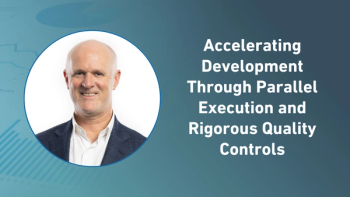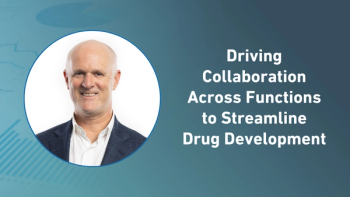
The End of the Beginning for Digital Endpoints?
New European report digs deeper into the potential of digital health-driven outcome measures—perhaps a hopeful step in the journey from theory to practice.
Digital endpoints are having a tough time winning acceptance—in Europe and beyond. But the clinical trial community on both sides of the Atlantic is determined to tackle the inherent challenges and to promote a greater recognition of their potential among patients, physicians, regulators, and healthcare payers.
Last October, this column highlighted a
The report boldly prefaces itself with a blunt question: "Can digital technology really help to measure meaningful endpoints in clinical trials?" And it answers with equal firmness: "With the right conditions, it certainly can"—which was the conclusion of a workshop of international stakeholders in clinical research on which the report is based.
The promise of digital health technology (DHT) received plenty of attention at the workshop: more precise, relevant, and sensitive measures to identify treatment effects sooner, in trials that are smaller, and with lower drop-out rates—even allowing patients to take part in their own home, encouraging participation of non-traditional and underserved patient populations.
The workshop sketched digitalization moving from theory to practice, with estimates of digital technology accounting for as much as 80% of data collection in clinical trials by 2025 as mobile apps and wearables with miniaturized biosensors proliferate. Within the European Medicines Agency (EMA), with its strong commitment to digitalization, potential benefit is seen in decreasing missing data, increasing observation of patient functioning in a real-world setting, streamlining clinical investigations, and delivering remote data capture and patient monitoring. Voluntary regulatory pathways of qualification for novel methodologies are available both from EMA and FDA, and existing guidelines are under further development.
But the challenges were also spelled out at length: agreement on validation methods and on guarantees of rigor and quality, engagement of patients and physicians, demonstration of superiority to existing measures, and confidence about the business case among developers. The path is not eased by persistent and significant divergences among regulators and health technology assessment (HTA) bodies, and by a generalized shortage of the new skills needed.
DHTs must be verified as fit for purpose, and the clinical investigation endpoints must target an outcome of interest—but developers’ experience with these qualification procedures is still limited. Mere invocation of the potential will not be sufficient for regulators, and developers will have to provide early and well-defined evidence-generation plans to obtain qualification. Patient engagement has to be more than a mere verbal commitment, and must respect trial participants' preference for as few DHTs as possible to capture maximum endpoints and ensure optimal usage of data.
Uncertainties surrounding qualification for an outcome measure pose more complex financial questions than in traditional product development, and the business case is further complicated by questions over HTA acceptance of a novel measure. A lack of international harmonization of terminologies and requirements results in fragmentation among distinct decision-making authorities, adding to the difficulties of development conducted at global level.
Nonetheless, DHTs are no longer seen as merely a way of monitoring glucose levels for diabetics. They are increasingly perceived as permitting more selective trial inclusion, protecting patient safety, predicting adverse events, defining better outcomes, and permitting smarter extrapolation. And amid all the challenges, the workshop reflected a degree of support from across the spectrum of stakeholders to work together toward solutions, and to maintain the momentum. As one participant summed it up: “At the moment everyone is open, everyone is listening and there are very few critical voices. Hardly anyone denies the potential and we're all looking at how we can use it.”
The end of the beginning?
Newsletter
Stay current in clinical research with Applied Clinical Trials, providing expert insights, regulatory updates, and practical strategies for successful clinical trial design and execution.





.png)



.png)



.png)
.png)
